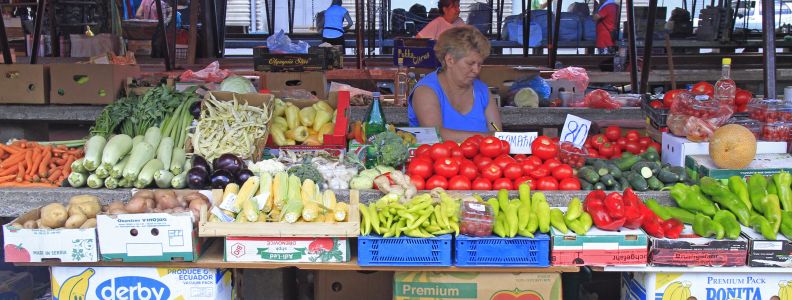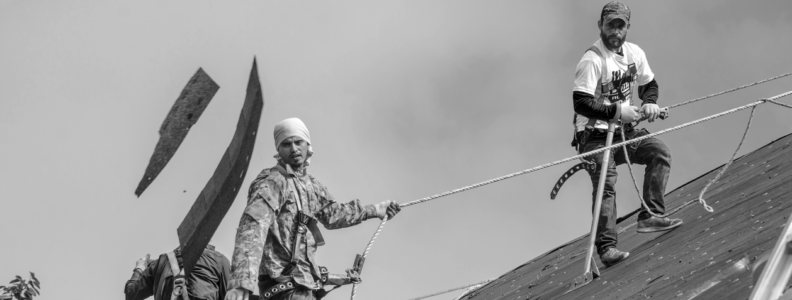Blog

When Farm Liability Insurance Is Not Enough
You are a farm and you are insured, of course. Most likely you’re covered properly, but then again, how do you really know? Is your Farm Liability policy enough?
Most businesses cover themselves again Bodily Injury (BI) and Property Damage (PD) sustained by others that they are responsible for on a Commercial General Liability (CGL) policy. But farms are special. A farm typically covers itself on a different type of liability policy used especially for farms. This policy is called – surprise, surprise – a Farm Liability (FL) policy.
An FL is essentially the same as a CGL in that it protects the insured business from the same things (BI & PD), but the FL is a little different.
For one, whereas the CGL covers the business regardless of what its operations are (this can – and often is – restricted of course, but that’s a separate blog topic) and where the claims occur (as long as it’s in the US, Canada, and US Territories and Possessions) the FL restricts the coverage to only applying to specific operations and locations.
For example, a restaurant insured on a standard unchanged (what we call “unendorsed”) CGL can open up a t-shirt shop across the street, forget to notify its insurance agent, and still be covered when a shopper slips and falls at that shop and sues the insured for the resulting BI & PD.
However, let’s say a farm – insured on an FL – were to do the exact same thing. Or maybe instead of t-shirts, it sells apple pies made from its own apples. Or maybe the farm sets up a tractor repair shop across the street. Or maybe it sets up a booth at a farmers market across town. Whatever the case, the same type of slip-and-fall claim occurs. Only in this situation there would be no coverage.
How does this happen and why?
As for the How, it happens like this:
First, the FL covers a farm only for “Farming” which means, paraphrased: selling your raw unprocessed farm product (fruits, livestock, hay, vegetables, fish, eggs, etc.) wholesale, and retail only if sold on your farm premise without also selling any goods of others.
Second, the FL excludes coverage for “Business Pursuits,” which is defined as, paraphrased: a trade, profession, occupation, enterprise, or activity that the farmer engages in, for compensation, that falls outside the definition of farming.
Third, the FL excludes coverage for Professional Services. As if the Business Pursuits exclusion isn’t enough, the policy excludes coverage for professional services. Why did they add this then? I don’t know for sure, but it certainly makes it clear that if your business pursuit is something of professional services nature, like consulting, planning, or advising, you’re not going to get coverage out of this policy. (Side note: if your business pursuit is consultation, planning, or advice, you’ll need to find coverage on an Errors and Omissions policy).
Fourth, the FL excludes coverage for renting properties out to others. One might think the Business Pursuits exclusion would be enough to exclude rental properties, but there are some rental situations that are in fact covered, so ISO (the people that write insurance contracts) created a special exclusion with exceptions just for rentals. The first exception is if the rental property is a residential rental located on on a covered location that also has farming on it. The second is if the rental location is rented out specifically for a farm. For example, if the insured farm owns a location and leases it out to another farmer that grows a vineyard on it; that would be covered.
Fifth, the FL excludes coverage for Custom Farming, which is defined as, paraphrased: the farming of someone else’s farm for a fee. In case there is any question as to whether Custom Farming is “farming” or a “business pursuit,” this exclusion makes it clear. But, thankfully, it also gives back coverage in certain circumstances by saying that the exclusion applies only if your receipts for the previous 12 months exceed $5,000. What is the purpose of this? I can only guess that it is because ISO (the people that write the policies) thought that custom farming is closely related to farming that they didn’t want to punish a farmer who engages in a one-time, incidental, or occasional custom farm job.
To summarize where we’re at so far: the FL defines what “farming” is, covers you only for “farming,” and then it adds a bunch of exclusions to make sure that in case we thought that some other activities might count as farming; no, they’re not.
But wait; there’s more. For a final kick-in-the-pants, the FL excludes coverage if it arises out of a location that is not listed on the declaration. So let’s say an avocado farm buys a new parcel of land and starts planting avocados, and forgets to add it to his farm policy. There is no BI or PD coverage arising out of that location. Well, technically and fortunately there is temporary coverage for newly acquired locations, but as soon as that FL renews, the temporary coverage is removed, and this location is now excluded.
That is the the How.
As for the Why; why is the FL limited in ways that the CGL isn’t?
No one knows except the good people at ISO. I can only guess it’s because FL rates are pretty darn cheap compared to CGL rates on other types of businesses. The rates on an FL are based on acreage, not gross sales, payroll, or employee count like other CGL policies are. This means a very productive farm generating millions of dollars worth of oranges will pay the same premium for a hobby farm that lets half of its oranges fall to the ground if its acreage is the same. Also, it is a safe assumption to make that where you find insurance coverage cheaply, you also find restrictions.
It’s not all bad though. The FL has its benefits. For one, the FL automatically includes Comprehensive Personal Liability (CPL), so if you live on the farm (which most farmers do) the FL also acts as your CPL. This means you don’t have to go find a Homeowners policy in addition to the FL. Also, if you are a farmer that does not or will not add any other business pursuits, this is the perfect coverage for you! It is inexpensive and sufficient.
The problems with the FL and its exclusions is the fact that the modern farmer does much more than just farming (this is very evident in Southern California where almost all of the farms I insure are located). The modern farmer tends to add in those excluded business pursuits- such as farm tours, a pumpkin patch, a gift shop, a snack bar, and u-pick operations. Many vineyards have added wineries, and many apple orchards have added cideries. And many farms are buying products from other farms and reselling them, whether wholesale or in a retail shop or at a farmers market. The list goes on… seriously.
However, despite all this, I want to leave it on a positive, because there is a pretty big positive.
The good news is it is actually quite easy to get the modern farm and all of its other business pursuits covered. The way it’s done, for those that are interested, is through a combo of 1) adding a separate CGL to supplement the FL and cover the non-farm operations or 2) write the entire policy on a CGL instead of an FL. The second method may make it more difficult to insure the personal liability exposures of the farmer that lives on the premise. But even then, the solution is likely as easy as getting a separate CPL. And if the farm is a partnership, LLC, or corporation (as opposed to a sole proprietor), then the CPL may have to be written separately from the start…. I didn’t say it was simple, but it is usually easily doable. It may not be as cheap as the FL, but it will leave you covered without the worry of an unexpected coverage gap. We don’t like insurance surprises at Gillespie Insurance Services and we do everything in our power to prevent them.
 ELI GILLESPIE
ELI GILLESPIE
I’m the commercial producer and owner at Gillespie Insurance Services.
SCHEDULE A CALL
SEND EMAIL




